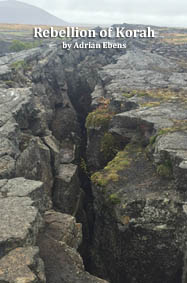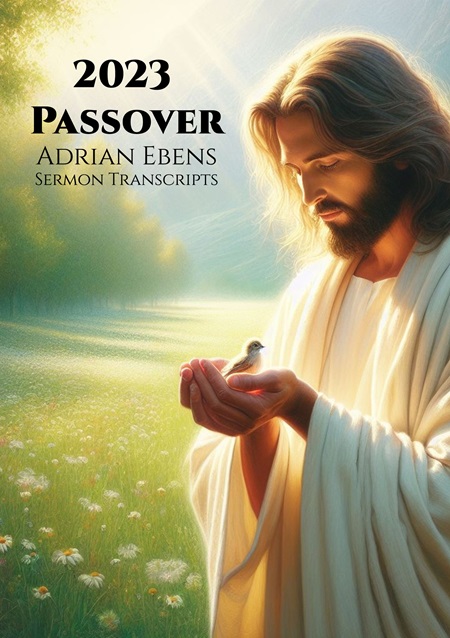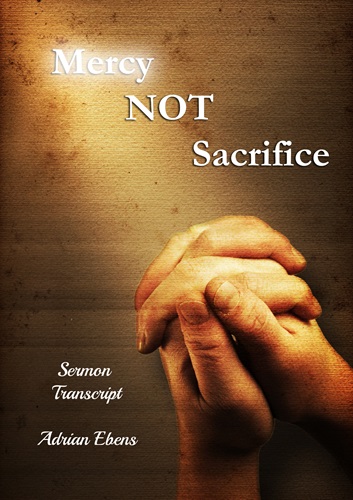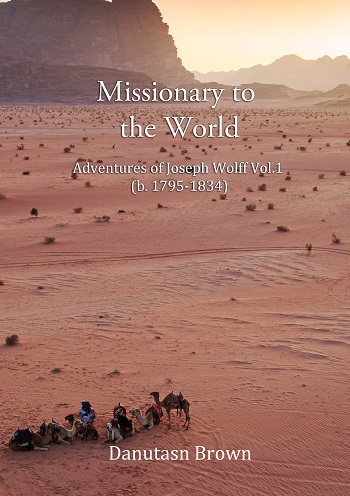Another perspective of the 1913 F. M. Wilcox
Is there something in common with Samuel Spear's (1892) article, and F. M. Wilcox's (1913) "Trinity" statement? Similar to Samuel Spear's apparent "Trinitarian" endorsement of Adventist belief in 1892, (as reprinted by M. C. Wilcox), is the 1913 "Trinity" statement from his brother F. M. Wilcox in the Review and Herald. Nearly every church historian and scholar who has written on the subject, grasp this statement as undeniable proof that Adventism had fully accepted the Trinity doctrine as early as 1913. (see Pfandl, footnote #64)
Whidden, Moon, and Reeve say this about the Wilcox statement: "Her [E.G.W.'s] support for a biblical view of the Trinity became so explicit during the years between 1902 and 1907 that by 1913, F. M. Wilcox, editor of the denomination's most influential periodical...could write in the Review and Herald without fear of contradiction by her, that 'Seventh-day Adventists believe, --1. In the divine Trinity. This Trinity consists of the eternal Father,...the Lord Jesus Christ,...{and} the Holy Spirit, the third person of the Godhead' (Wilcox, 'The Message for Today,' Review and Herald, Oct. 9, 1913)." (See Google Books)
Why not quote the entire statement?
Yet, Pfandl, Whidden, Moon, and Reeve don't quote the entire "Trinity" statement for several specific reasons. Firstly, Wilcox's 1913 statement is not much different from the 1872, and 1889 statement. The following is the 1889 statement regarding God:
"I. That there is one God, a personal, spiritual being, the creator of all things, omnipotent, omniscient, and eternal, infinite in wisdom, holiness, justice, goodness, truth, and mercy; unchangeable, and everywhere present by his representative, the Holy Spirit. Ps. 139:7.
II. That there is one Lord Jesus Christ, the Son of the Eternal Father, the one by whom God created all things, and by whom they do consist;..." (See here)
Notice the differences yet many similarities with Wilcox's 1913 statement:
"For the benefit of those who may desire to know more particularly the cardinal features of the faith held by this denomination, we shall state that Seventh-day Adventists believe,—
1. In the divine Trinity. This Trinity consists of the eternal Father, a personal, spiritual being, omnipotent, omniscient, infinite in power, wisdom, and love; of the Lord Jesus Christ, the Son of the eternal Father, through whom all things were created, and through whom the salvation of the redeemed hosts will be accomplished; the Holy Spirit, the third person of the Godhead, the one regenerating agency in the work of redemption." (F. M. Wilcox, The Message for Today, RH Oct. 9, 1913, p. 21)
1913 statement avoids discussion of inner-trinitarian relations.
We have already mentioned that Wilcox's statement is not much different from the 1872, and 1889 statements excepting in the "term" Trinity, and the Holy Spirit as "the third person of the Godhead." The second reason why Pfandl, Whidden, Moon, and Reeve don't quote Wilcox's entire statement is because it does not explain or detail Trinitarian theology and could be accepted by non-trinitarians just like Samuel Spears' "Bible Doctrine of the Trinity" article. Modern Adventist church leader Gilbert M. Valentine has researched and written upon this subject. The following are his observations about the 1913 Wilcox statement:
"Even though F. M. Wilcox had published in the Review in 1913 that Adventists believed in the divine Trinity, the statement avoids discussion of inner-trinitarian relations, stating that Jesus is 'the Son of the eternal Father' rather than the eternal Son. RH, Oct. 9, 1913, p. 21. Semi-arians such as Washburn could live with it." (Gilbert M. Valentine, W.W. Prescott, p. 285)
"Although Review editor F. M. Wilcox was able to say in a doctrinal summary in the Review in 1913 that Adventists believed "in the divine Trinity," his language sidestepped the issue of the eternal self-existent deity of Christ and was still sufficiently vague as to be able to include both the traditional semi-Arians and the Trinitarians. Jesus was simply "the son of the Eternal Father." But the Holy Spirit was the third "person" of the Godhead. "The Message for Today" RH October 9, 1913,21."(Gilbert M. Valentine, How clear views of Jesus developed in the Adventist Church)
Motivation for making the 1913 statement.
At this point, the question could be asked, if Wilcox's statement "was still sufficiently vague as to be able to include both the traditional semi-Arians and the Trinitarians," what motivated him to make this statement? While there is only circumstantial evidences at best for any answer, Adventist Trinitarian author Glyn Parfitt gives us his opinion:
"This is a decidedly Trinitarian statement, and Wilcox states it in a matter of fact way, clearly saying that this is what Seventh-day Adventists believe. It is not just his own opinion. Unless there is an earlier statement, not yet discovered, this is the first Trinitarian statement of Seventh-day Adventist beliefs....The motivation of Wilcox in publishing his statement may well have been the fact that just two years earlier, the 1872 statement was republished for the ninth and last time in a denominational periodical. Wilcox must have come to the conclusion that it was time for an update, in a number of key doctrinal areas." (The Trinity: what has God revealed?: objections answered, 2008, Glyn Parfitt)
Well, if Mr. Parfitt can speculate about Wilcox's "motivation" for including the term Trinity in his 1913 statement, then so can we. Let's assume Wilcox did "come to the conclusion that it was time for an update, in a number of key doctrinal areas." Let's assume he did update the 1872 statement from non-trinitarian, to a fully Trinitarian theology. Who gave F. M. Wilcox the authority to speak for the entire denomination?
There is no recorded discussion about the trinity during the 1913 G.C. session which had convened just six months prior to Wilcox's statement. Does Mr. Parfitt really believe that one man, without the support or authorization of the leadership, and general church membership, can change "key doctrinal areas" of foundational beliefs? In other words, there is no record of ANYONE authorizing, or even wanting an updated, "Trinitarian," statement of beliefs.
At this point Parfitt along with Moon would argue that because Mrs. White's "support for a biblical view of the Trinity became so explicit during the years between 1902 and 1907 that by 1913" the Trinity doctrine was generally accepted by "common consent." This argument holds no weight however because of the following evidences:
1) (1919) The opposition to Trinitarian concepts being introduced during the 1919 Bible Conference. (Merlin Bert)
2) (1928) The opposition to Trinitarian concepts being introduced through Froom's book "The Coming of the Comforter" (1928).
“May I state that my book, The Coming of the Comforter was the result of a series of studies that I gave in 1927-28 to ministerial institutes throughout North America. You cannot imagine how I was pummeled by some of the old timers because I pressed on the personality of the Holy Spirit as the Third Person of the Godhead. Some men denied that--still deny it. But the book has come to be generally accepted as standard...” (LeRoy Froom to Dr. Otto H. Christenson, Oct 27,1960.)
3) (1931) Even Froom admits there was still no denominational unity regarding the Trinity by 1931. Also, that the 1931 statement including the "term" Trinity could not have been issued prior to 1921 without "strong protest."
"After carefully reading Wilcox's [1931] "Fundamental Beliefs" statement, Nichol expressed appreciation and approval of its scope and balance. He noted that it was conservatively stated—doubtless framed that way in the hope that it might be acceptable to those [non-trinitarians] who had held divergent views, especially over the Godhead. Yes, that was true, Wilcox assented." (Froom, MOD, p. 414; emphasis supplied)
"His [F. M. Wilcox's] consistent life and teachings had won for him the deepest respect of both parties [non vs. pro-trinitarian] in the old controversies over the Godhead....He was doubtless the one personality who could formulate a basic statement of Adventist faith, so carefully yet faithfully phrased that it would have general acceptance by all. Such was the setting for his draft of the 'Fundamental Beliefs of the Seventh-day Adventists,' quietly framed by him in 1931 in the midst of his life of earnest service. It would have been well-nigh impossible for a statement of "Fundamental Beliefs," such as was drafted by Wilcox in 1931...to have been issued a score of years, or even a decade prior to 1931, without strong protest by some."
"...Watson stated to me, that in the thinking of the small committee, no formal or official approval should be sought for the unofficial Wilcox statement of 1931. It was therefore not brought before the General Conference Committee. It had not been prepared as a creed, but as a summary of our fundamental beliefs, to see how it [the "Trinity" term] would be received. To this end the committee of four had been given power to act." (Froom, MOD, p. 418, 419, emphasis supplied)
4) (1942) The committee to "revise" Daniel and Revelation by Uriah Smith, admitted that there were still "some differences of view among us" regarding the Sonship of Christ in eternity.
"But later he [Uriah Smith] revised his belief and teaching to the effect that Christ was begotten sometime back in eternity before the creation of the world....Since there is some difference of view among us on this point, it seemed to the committee wise to omit this teaching without comment."
“Again on Oct. 28, 1942 Howell told the assembled council: 'Our committee had not thought of making a pronouncement on the doctrine for the denomination. But knowing there are some differences of view among us, it was our judgment that it would be better to omit the subject altogether from the book, without comment, and leave the matter open for all to study without let or hindrance.'" (The Ministry, May, 1945, p. 4; Froom, MOD, p. 427, emphasis supplied)
Why doesn't Froom mention the 1913 Wilcox statement?
Having briefly examined some of the evidences that Trinitarianism was not generally accepted until much, much, later than 1913; Glyn Parfitt raises some interesting questions about the F. M. Wilcox statement.
"Froom does not mention that Wilcox, the one who drafted the 1931 statement, had much earlier published a Trinitarian statement of beliefs in the Review & Herald. This happened in 1913, the same year in which Froom began his work as a minister, so he may not have been aware of it." "The S.D.A. Encyclopedia, although detailing the various times when the 1872 Statement was published, omitted all mention of this 1913 Statement." (The Trinity: what has God revealed?: objections answered, 2008, Glyn Parfitt)
Why did Froom choose not to tell.
It's highly unlikely Froom was unaware of the 1913 statement. Think about it, LeRoy Froom spent his entire career championing Adventist Trinitarianism while simultaneously apologizing for Adventisms non-trinitarian roots. Froom worked closely with F. M. Wilcox for many years. Wilcox's 1913 statement was not "forgotten" in some dusty archives. Froom and everyone else "omitted all mention of this 1913 statement" not because they were not "aware of it," but rather as a deliberate, calculated choice.
Fishin' for Protesters.
Watson admitted they were stepping on eggshells with the 1931 "Trinity" statement. That's why it was just published with "no formal or official approval" in order to "see how it would be received." In other words how many leaders and members would PROTEST the Trinity term. Like the 1931 statement, the 1913 statement could have been the "Trinity" bait, while "fishing" for protesters. However many protested we don't know, yet the line wasn't cast out again until 1931.
Adventist doctrine established by dictum?
If Pfandl, Whidden, Moon, Reeve, and Parfitt are interpreting the significance of the 1913 statement incorrectly (i.e. there was not a general or majority acceptance of the Trinity in Adventism as early as 1913); then the reason why Froom and others feared to mention this statement becomes painfully obvious. Maybe Adventist doctrine is established by dictum: That one, or a few key leaders can, and do change doctrinal beliefs behind closed doors, and all the peon church members must follow in blind obedience.
If F. M. Wilcox was nefariously trying to change the denominational belief about the Trinity in 1913, it didn't work. No one referenced his 1913 statement as the denominational belief regarding the Trinity. This leads to a more plausible rationale for His Motive. What was so significant and important about the year 1913? Had denominational leaders been studying the Trinity so hard and long that now we are ready to publish an official change of beliefs to the world? There is another reason that is much more probable.
Evangelical Conferences with Canright?
It is possible that F. M. Wilcox was chosen, or voluntarily chose to directly counter D. M. Canright's accusation: "They [Adventists] reject the Trinity." Canright personally knew F. M. Wilcox, and regularly met with SDA ministers and church leaders between 1910 and 1916. Canright also spent two weeks meeting with church leaders at Battle Creek during the year 1913. "D. M. Canright seemed to have no hesitation about visiting freely with the Adventist Church leaders. Elder F. M. Wilcox, for thirty-three years editor in chief of the Review and Herald, relates one such incident:
"I recall an interesting conversation which I had with D. M. Canright some time before his death. I was attending a general meeting held in Battle Creek, Michigan. Elder Canright was at the sanitarium taking treatment. He attended some of our meetings.'" (I was Canright's secretary p. 102)
"Elder Lee remembers seeing Canright only once, when he walked quietly into a 'workers' meeting at Grand Rapids. Whenever possible, this seemed to be Canright's custom during the years 1910-1916. He especially enjoyed attending meetings of Seventh-day Adventist ministers....Canright's visit to Battle Creek about the time this incident took place is attested to in a letter he wrote to Elder J. H. Morrison, dated June 25, 1913. Speaking of his former brethren he says: 'I have just spent two weeks in Battle Creek, attending all their meetings and having long visits with ministers, brethren and sisters.' " (I was Canright's secretary p. 104)
What did they talk about?
Although admitting to: "attending all their meetings and having long visits with ministers," Canright doesn't say what they talked about. Ever since his book "Adventism Renounced" was published in 1889: "Nearly every religious paper in Christendom has heralded his apostasy, and become, to some extent, the medium through which he has vented his feelings..." So what did Canright and the Adventist church leaders talk about in 1913? Whatever they talked about in 1913, Canright removed his accusation: "They [Adventists]reject the trinity" when he reprinted his book the following year (1914). Was this just a coincidence? It's highly unlikely.
Although this new edition of "Adventism Renounced" continued to charge Adventist's with believing "in the Sonship of Christ," all references to the trinity were completely removed. My guess is that a church leader, or leaders convinced Canright that they now believed in the separate personality of the Holy Spirit; while failing to convince him that they now denied Christ's "begotten" origin from the Father in eternity. He must have had some motivation to edit his book.
Based only on circumstantial evidence, it's highly likely that one or more Adventist leaders protested to Canright about the church's fundamental belief about God. Canright might have conceded and said, "If you can show me an official church statement about the Trinity, I'll remove that accusation from my book." Then someone probably pulled out "The Desire of Ages" and quoted something about "life original, unborrowed, underived," and the "third person of the Godhead" etc. etc. Then Canright might have said, "Mrs. White isn't even directly talking about the Trinity in any of these quotes, I want an official 'statement of belief,' then I will retract." Obviously, this is all hypothetical. However, F. M. Wilcox's "Trinity" statement in the Review apparently was sufficient enough evidence for Canright to re-edit his book and remove the non-Trinity accusation.
Pacify the critics.
D. M. Canright was not the only one accusing Adventists of rejecting the Trinity in 1913. A highly respected Protestant author had this to say about Adventists in his new book:
"The Seventh-day Adventists...reject the doctrine of the Trinity, which involves the Deity of Christ, though this is not stated....We would recommend you to read Seventh-Day Adventism Renounced, by Elder Canright..." (Bible problems explained, James Martin Gray, 1913)
Not only was the 1913 statement an answer to Canright, it was intended to counteract the negative influence of Gray's book as well. F. M. Wilcox did (in The Review) almost exactly what his non-trinitarian brother had done back in 1892 when reprinting Samuel Spears' article (in Signs of the Times). They both sought to relieve pressure from Adventist critics who were accusing Adventists of rejecting the trinity, while at the same time trying to uphold the previous non-trinitarian foundational beliefs.
Using the "term" without the baggage of the inferred concept, is a deception.
If the "term" Trinity means a simple belief in the Father, his Son, and Holy Spirit, then Adventists have always been "Trinitarian." Yet, if "Trinity" includes non-biblical extreme human speculations, then Adventists have always been non-trinitarian. F.M. Wilcox appears to use the "Term" (like Samuel Spear) while seeking to avoid affirmations of the "baggage" associated with the term. This is another classic example of "When trinity doesn't really mean Trinity." (see paper here) While conceding to use the "term" trinity without believing the "concept" as defined by the creeds, is in reality a deception. It's like making a promise with your fingers crossed behind your back. The following is an illustration of this kind of deception:
Adventists believe in the eternal torment of the wicked in hell fire; (in the context of annihilationism).
Adventists believe in the immortality of the soul; (in the context of soul-sleep and the final judgment).
Adventists believe in keeping the "Lords day" sacred; (if the Lords day is defined as the seventh-day sabbath).
Adventists believe in the Trinity; (if it's according to our own interpretation and definition; and NOT according to Catholic or Protestant creeds).
Not intended to unify but to repudiate.
Wilcox's 1913 statement was probably never intended to UNIFY denominational Adventism into accepting Trinitarianism. Rather, it was intended to specifically remove Adventism from the Protestants' non-trinitarian / non-christian, cult, watch-list. Similarly, the book "Adventists Answer Questions on Doctrine" was never intended to as a "profession of faith" for Adventists, but rather a public "repudiation" of early Adventism's non-trinitarian faith for the benefit of non-Adventists. (Froom, MOD, p. 483)
The simple irony is that ever since Canright's Trinity accusation, Adventist leaders have held closed door sessions with Protestant leaders at least several different times in order to answer the exact same questions. Even in 2010, questions regarding the orthodoxy of SDA's "version" of the Trinity are as controversial as they were in the day of Canright, and Walter Martin.
----------------------------------------------------------------------------------------------------------------
Further reading about F. M. Wilcox and the 1913 statement:
Information about F. M. Wilcox.
M.C. Wilcox and F. M. Wilcox were brothers.
Gary Land on the 1913 and 1931 statements.
1937, F. M. Wilcox, notable absense of trinitarian terminology.
1938, F. M. Wilcox, notable absense of trinitarian terminology.
1946, F. M. Wilcox there is a trinity but let's not speculate about it.
-------------------------------------------------------------------------------------------------------------
Just found something today (April 5, 2011) that needs to be added to this blog. As it turns out, I think my hunch about the 1913 F. M. Wilcox "Trinity" statement being a counter reaction to Canright's accusations were correct after all. An article appeared in the April 8, 1913 edition of "Signs of the Times" entitled "Garbled Statements of Facts". The following is a portion of that article.
"A CORRESPONDENT sends us a copy of the Louisville Christian Observer of February 12, containing an article on the Seventh-day Adventists. It aims to set forth the views of Seventh-day Adventists, not from their own published statements so much, but statements from a disappointed, ambitious man who felt that his ability was not sufficiently recognized, and who apostatized. ..." [Canright]
"After confessing that it took him twenty-eight years to learn that he was in error, he claims to set forth the belief of Seventh-day Adventists, in a book which he publishes...." ["Adventism Renounced"]
"He perhaps tells us truly what he believed once, but he does not rightly represent the denomination. For instance, he declares that among the chief doctrinal points' of Seventh-day Adventists are "rejection of the doctrine of the Trinity; materiality of all things; that the Bible must be interpreted to harmonize with the writings of Mrs. White; that when Christ comes only 144,000 out of all then living will be saved, and all those will be Seventh-day Adventists. '' Now in the sense in which these are set forth they are not true...
"The best way to understand just what Seventh-day Adventists believe is to read just what they have to say. All of the great fundamental Scriptural views of the denomination are given each year in the SIGNS OF THE TIMES, and these are taught as the editors understand the Bible to teach them...."
"All that Seventh-day Adventists ask at all is that fair examination shall be given of their teachings." [all emphasis supplied]
The short story is that someone sent a copy of "Christian Observer" article to the editor, M. C. Wilcox. Wilcox is obviously distraught about Canright's negative accusations, including the "rejection of the doctrine of the Trinity." Now, it is common knowledge that M. C. Wilcox always considered himself non-Trinitarian. Therefore, in what "sense" are Canright's accusations "not true"? Evidently, M. C. Wilcox believed that people understood Canright to be accusing SDA's of rejecting the Deity of Christ, and the existence of the Holy Spirit (something SDA's have never done).
M. C. Wilcox's "Signs" article appeared in April, 1913, while his brother's "Trinity" statement of belief appeared in the October RH the same year. They apparently discussed the issue. This is a huge piece of evidence for the argument that F. M. Wilcox was using the Trinity "term" loosely, and in a generic sense, and NOT as defined by standard church creeds.





